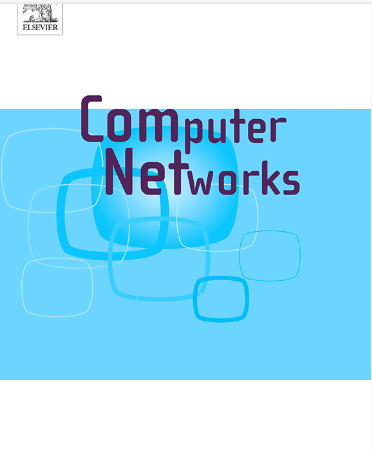缓存潜望镜:通过DNS缓存深入了解恶意域的全球流行
IF 4.4
2区 计算机科学
Q1 COMPUTER SCIENCE, HARDWARE & ARCHITECTURE
引用次数: 0
摘要
域名经常被滥用于各种有害和非法活动。为了减轻这些威胁,安全从业者建议基于域名解析数据、语义属性、网站外观和网站相关性等特征来检测恶意域名。尽管这些技术已经取得了显著的成果,但它们在对抗恶意活动方面仍然相对被动。在本文中,我们使用缓存探测技术对开放解析器上恶意域名的全球流行进行了大规模测量研究。提出了一种改进的探测方法,用于大规模域访问估计。利用这种方法,我们研究了在互联网上广泛部署和使用的开放解析器下恶意域的访问模式,旨在基于开放解析器的地理位置映射恶意活动的分布。此外,据我们所知,我们是第一个建议使用域名顶级列表来估计解析器用户的数量,这反映了解析器的潜在影响。通过实际DNS流量进一步验证了估计用户流量的权重。通过整合这两种方法,我们评估了恶意域名的潜在影响,并对全球开放解析器上的恶意域名活动进行了广泛的测量和分析。我们的研究结果揭示了恶意活动的区域分布,并为恶意域的全球流行提供了见解。我们的测量结果表明,从业人员可以使用建议的技术积极收集威胁情报,深入了解当前的互联网威胁,并实施更主动的措施来打击恶意活动。本文章由计算机程序翻译,如有差异,请以英文原文为准。
Cache Periscope: Gain insights into the global epidemic of malicious domains through DNS Cache
Domain names are often abused for various harmful and illegal activities. To mitigate these threats, security practitioners have proposed detecting malicious domains based on features such as domain name resolution data, semantic attributes, website appearance, and website correlations. Although these techniques have achieved notable results, they remain relatively passive in countering malicious activities. In this paper, we present a large-scale measurement study of the global epidemic of malicious domain names on open resolvers using cache probing techniques. We propose a modified probing method designed for large-scale domain access estimation. Leveraging this method, we examine the access patterns of malicious domains under open resolvers, which are widely deployed and utilized across the Internet, aiming to map the distribution of malicious activities based on the geographic location of open resolvers. Additionally, to the best of our knowledge, we are the first to propose using domain name top lists to estimate the volume of resolver users, which reflects the potential influence of a resolver. The weights of the estimated user volumes are further validated by real DNS traffic. By integrating these two methods, we evaluate the potential impact of malicious domains and conduct extensive measurements and analyses of malicious domain activities on open resolvers worldwide. Our findings reveal the regional distribution of malicious campaigns and provide insights into the global epidemic of malicious domains. Our measurement results demonstrate that practitioners can actively collect threat intelligence using the proposed techniques, gain insights into the current Internet threats, and implement more proactive measures to combat malicious campaigns.
求助全文
通过发布文献求助,成功后即可免费获取论文全文。
去求助
来源期刊

Computer Networks
工程技术-电信学
CiteScore
10.80
自引率
3.60%
发文量
434
审稿时长
8.6 months
期刊介绍:
Computer Networks is an international, archival journal providing a publication vehicle for complete coverage of all topics of interest to those involved in the computer communications networking area. The audience includes researchers, managers and operators of networks as well as designers and implementors. The Editorial Board will consider any material for publication that is of interest to those groups.
 求助内容:
求助内容: 应助结果提醒方式:
应助结果提醒方式:


